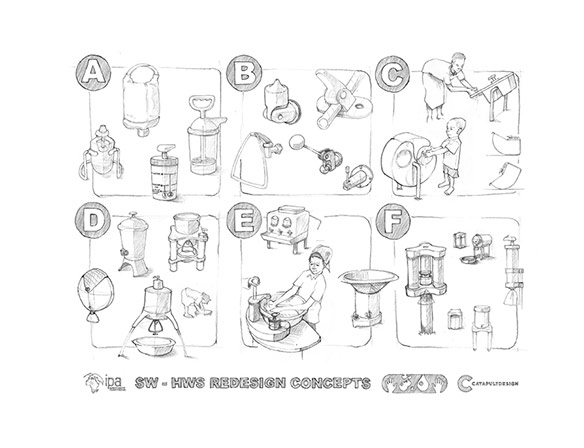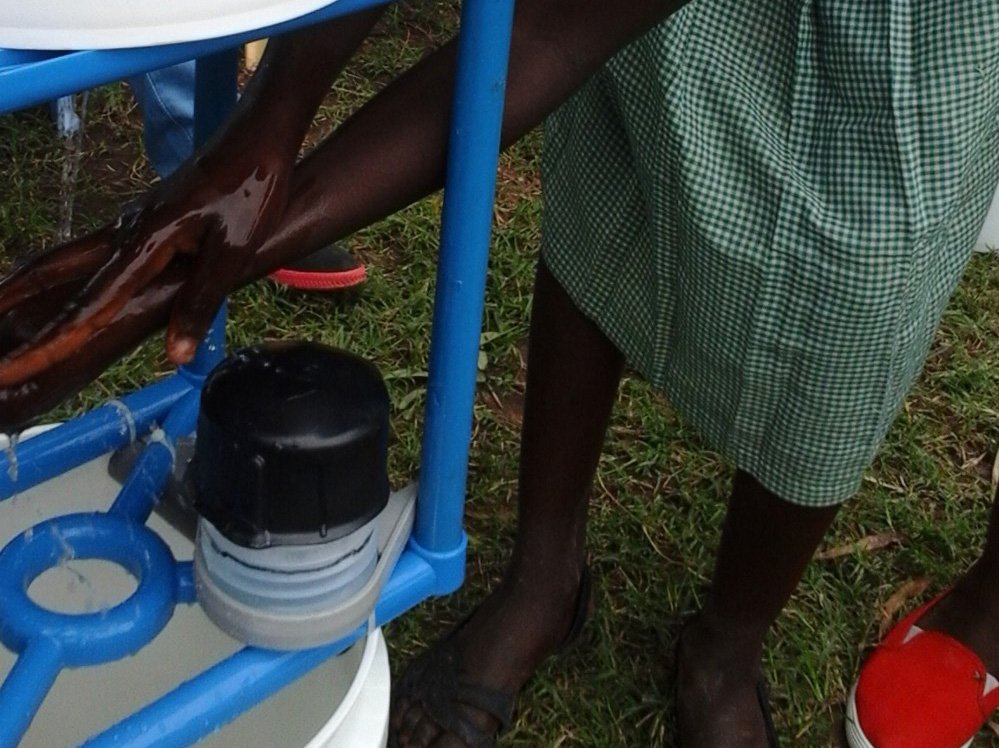Designing To Drive Handwashing Behavior
Client/Funder:
Innovations for Poverty Action
Location:
Kakamega, Kenya
Catapult Service Line:
Design
Thematic Area:
Wash
Challenge
In peri-urban western Kenya, the lack of modern plumbing, the cost of soap, and the distance required to access fresh water are just some of the reasons people are not washing their hands. Existing handwashing stations deteriorate rapidly in the harsh environmental conditions and are abandoned after only a few months (or even weeks) of use. The health risks associated with poor handwashing behavior are well documented, especially for children. Intestinal infection, particularly repeated infections within the first two years of life, can have lasting negative effects on physical and cognitive development.
Innovations for Poverty Action (IPA), an organization devoted to testing and promoting effective solutions to global poverty, needed a novel approach that addressed these barriers and encouraged consistent good handwashing behavior. IPA asked Catapult to design an autonomous hand washing product that contains and dispenses both soapy and rinsing water to enable and incentivize families to wash their hands hygienically, easily, and regularly.
Work
The IPA team engaged Catapult to redesign handwashing stations (product design) and processes (service design) to encourage good handwashing behavior and to reduce related health risks.
Our design process focused on the following activities:
- conducting end-user research with peri-urban institutions and families to observe how handwashing fits into their daily routines and better understand its perceived value
- surveying households, clinics, schools, and other key stakeholder groups to map influencers and inspire the design direction
- ideating the conceptual development of different features that allow a single solution to adapt to both household and institutional environments
- testing over 50 rough and refined conceptual ideas in-country to validate or disprove the best ideas
- conducting 2 month-long field visits of intensive prototype testing that included multiple iterations with the same 10 respondent groups in their local use context (households, schools, and clinics)
- producing a refined design for manufacturability at a price point that meets the needs of IPA and customers
Results
IPA kicked off a pilot of the latest design with 200 units in early 2015. The actual results, including the Return on Investment (ROI) of using a design-centered approach to increase product adoption, are continuing to be measured and will be available for review in the near future.
USAID Water Team Article “A Better Way to Wash Hands Without Piped Water: Designing the Povu Poa”


